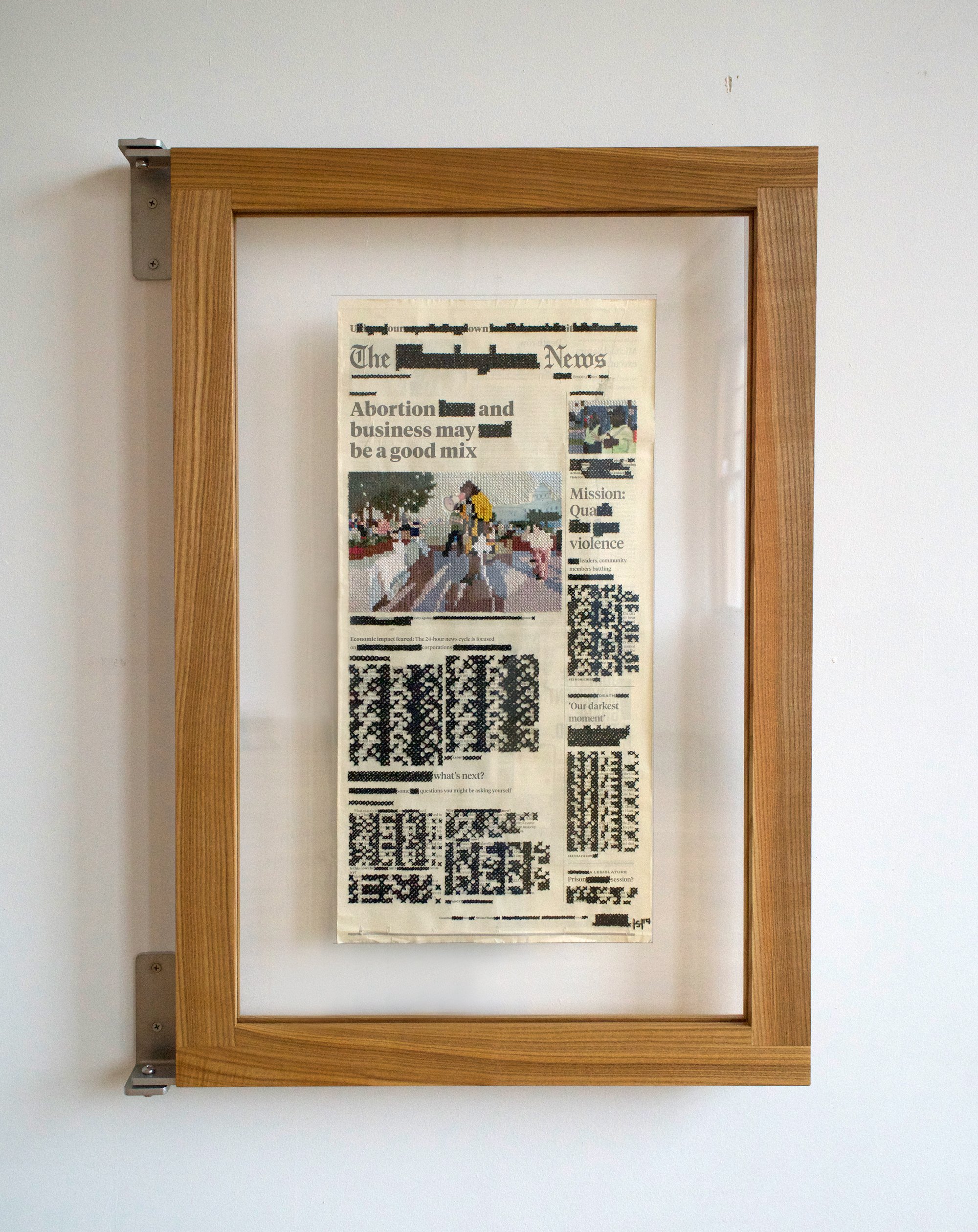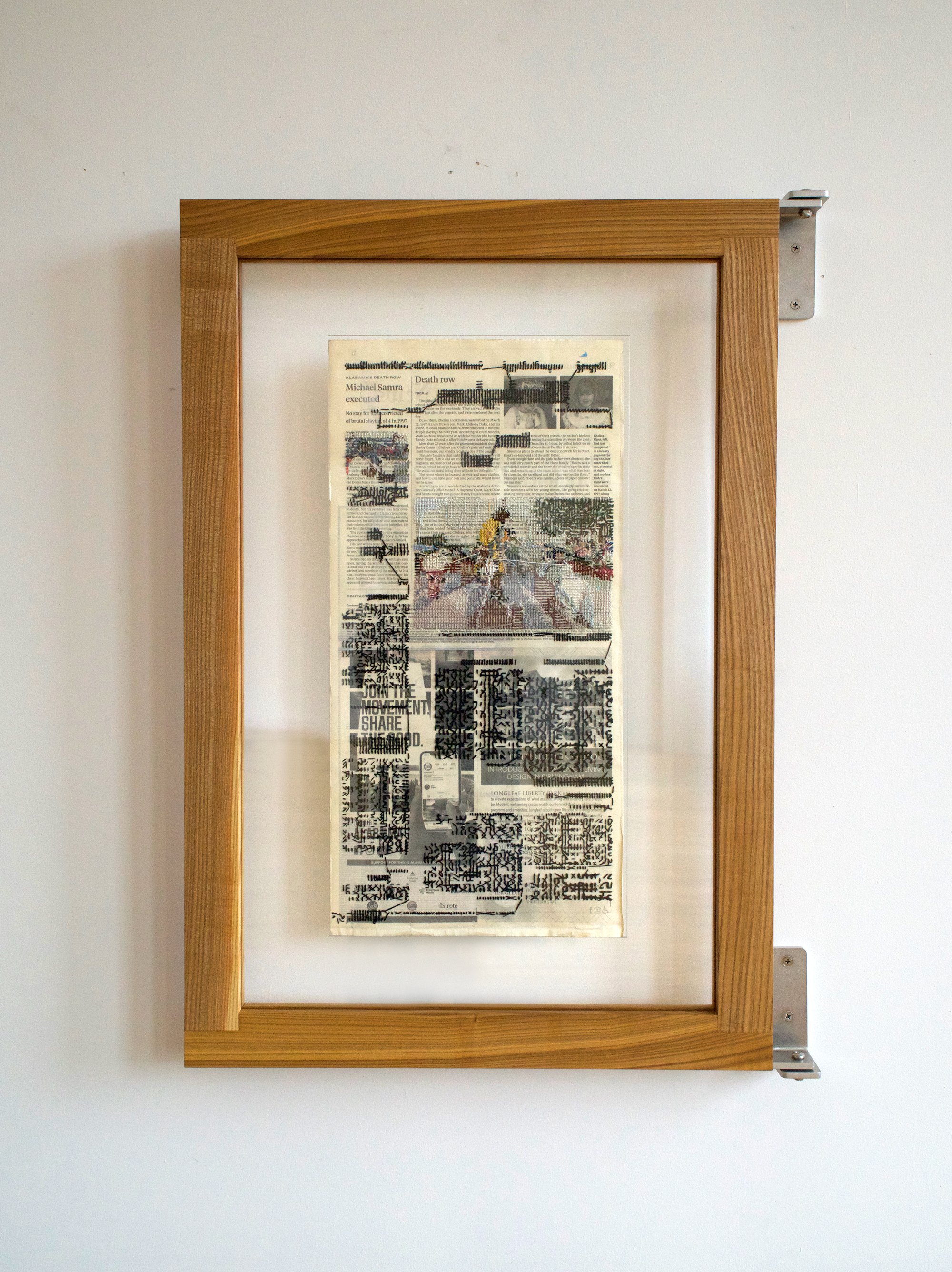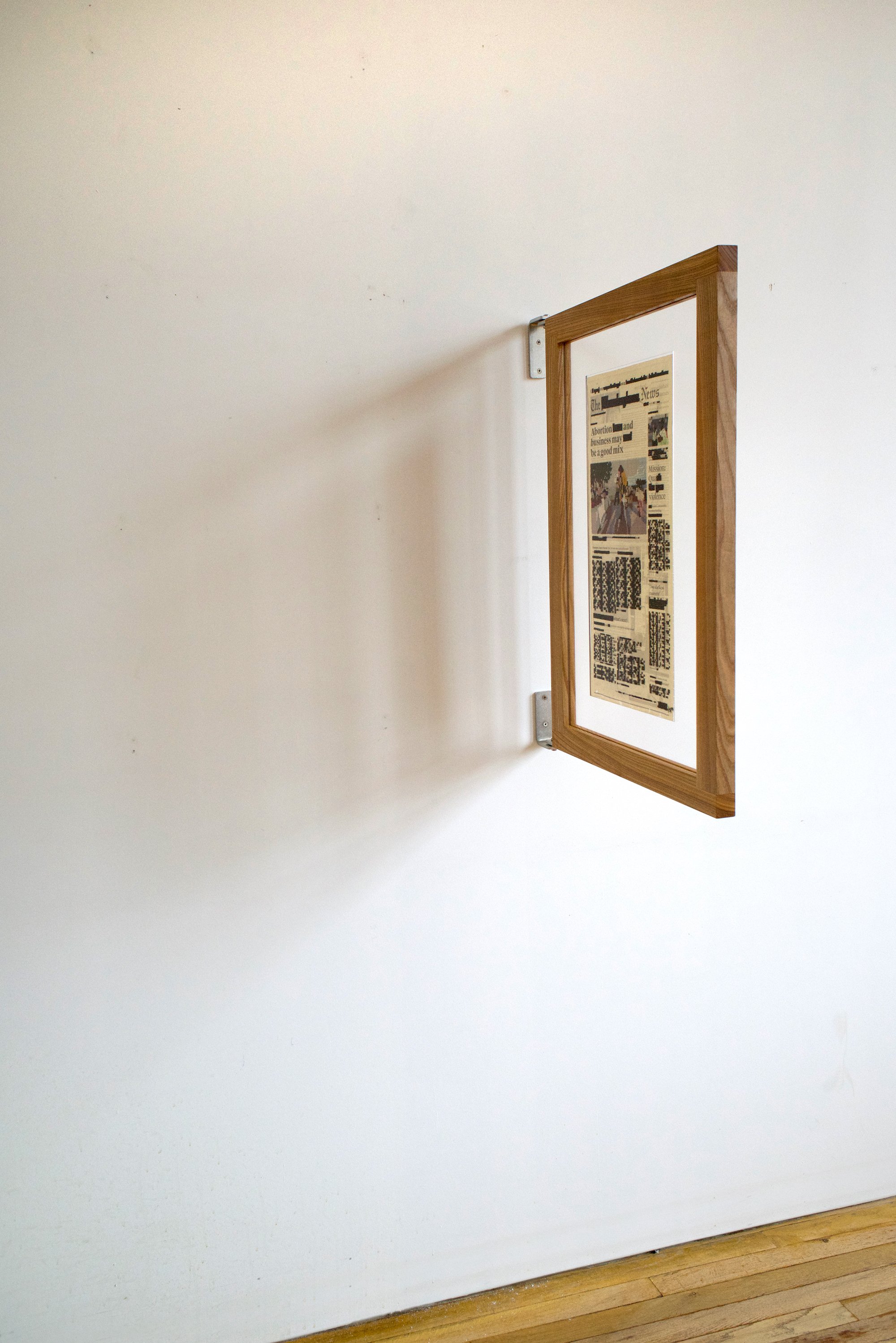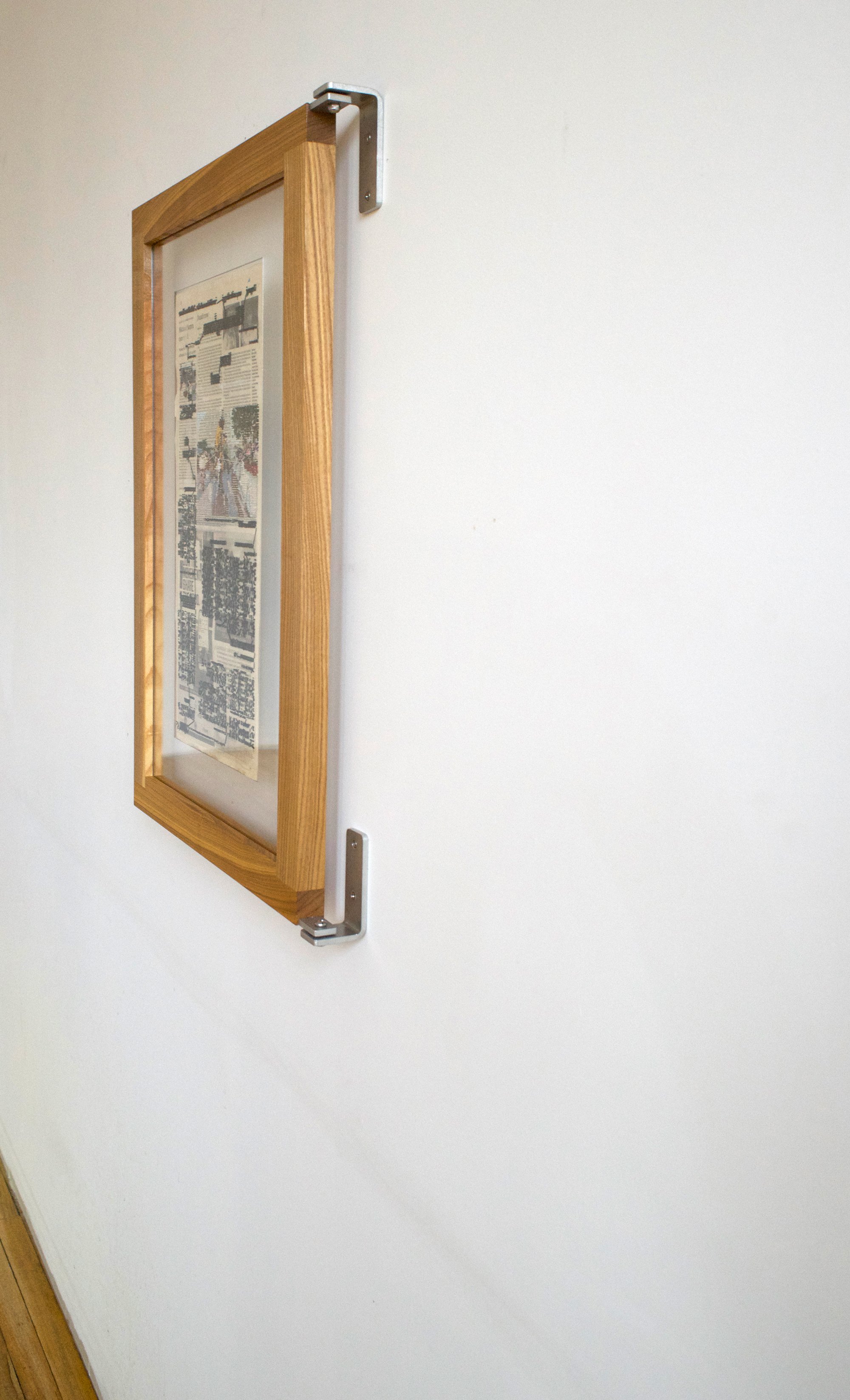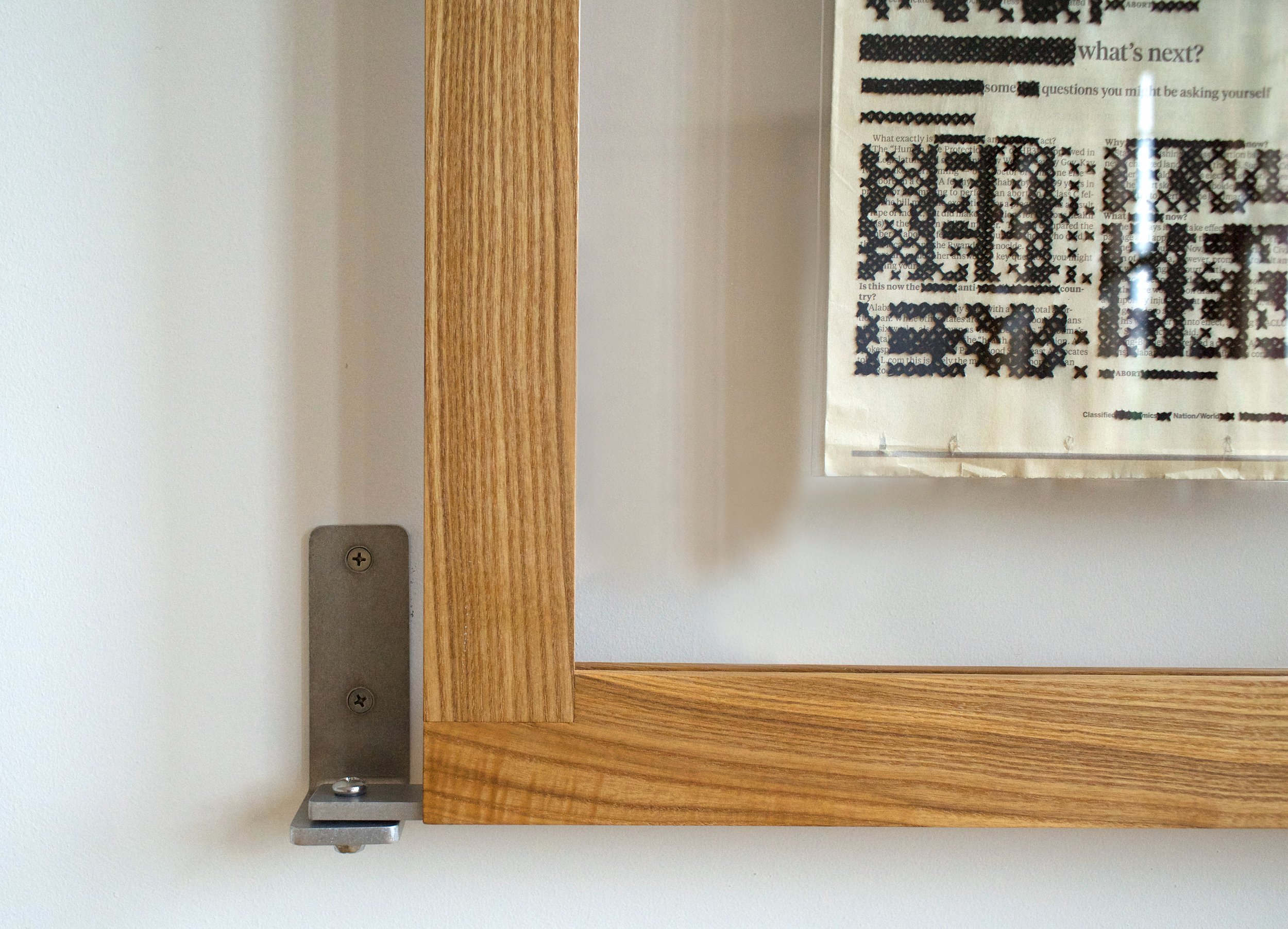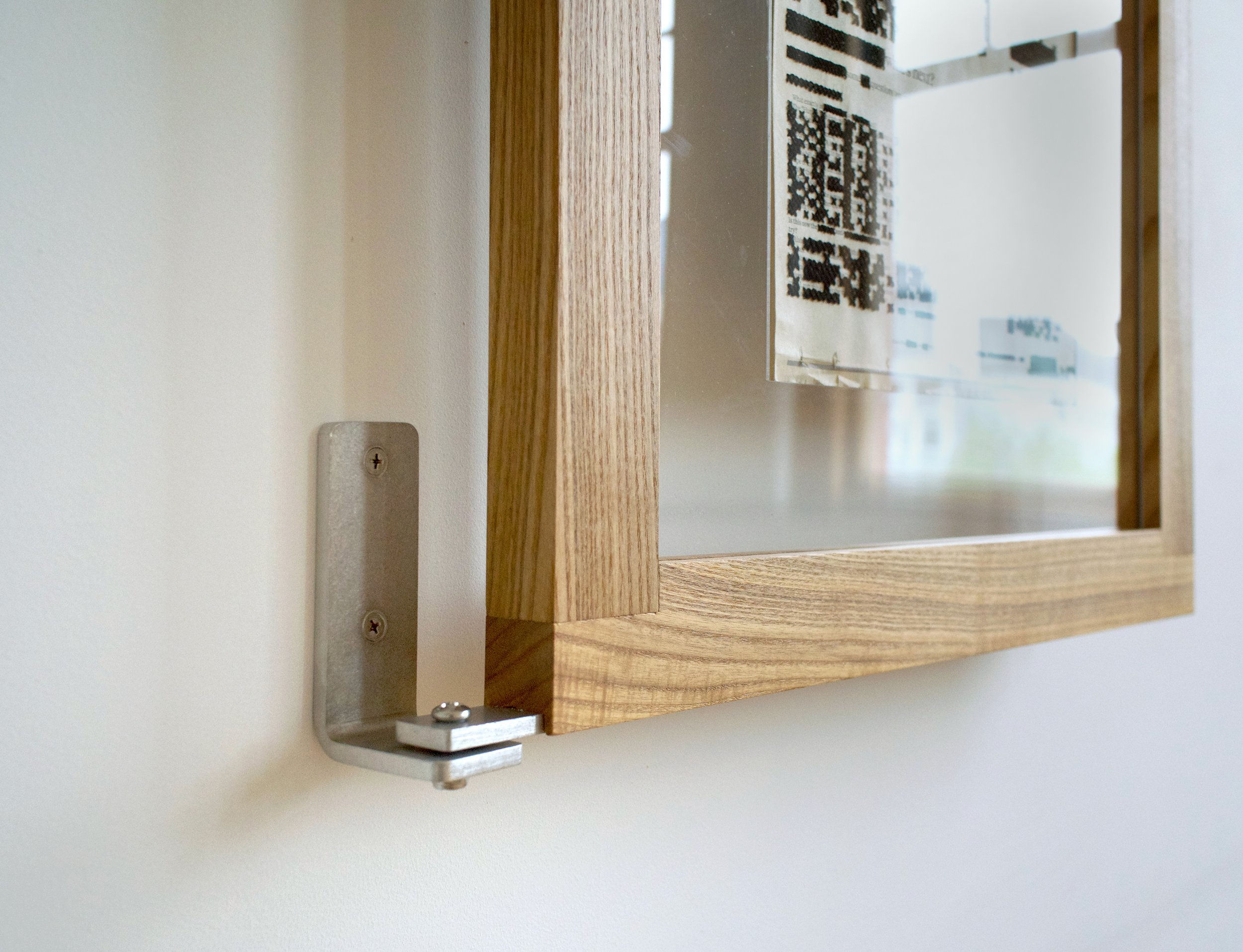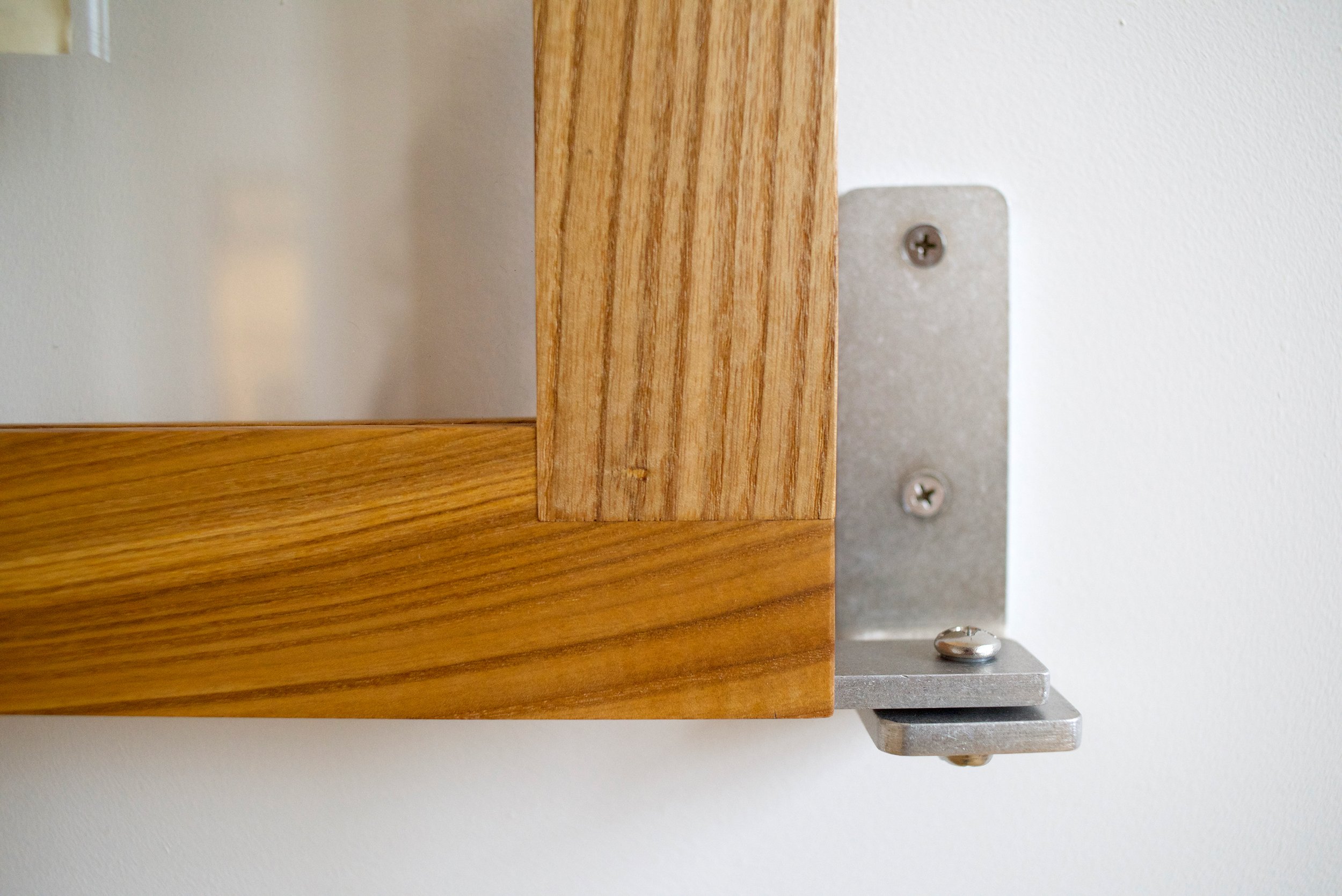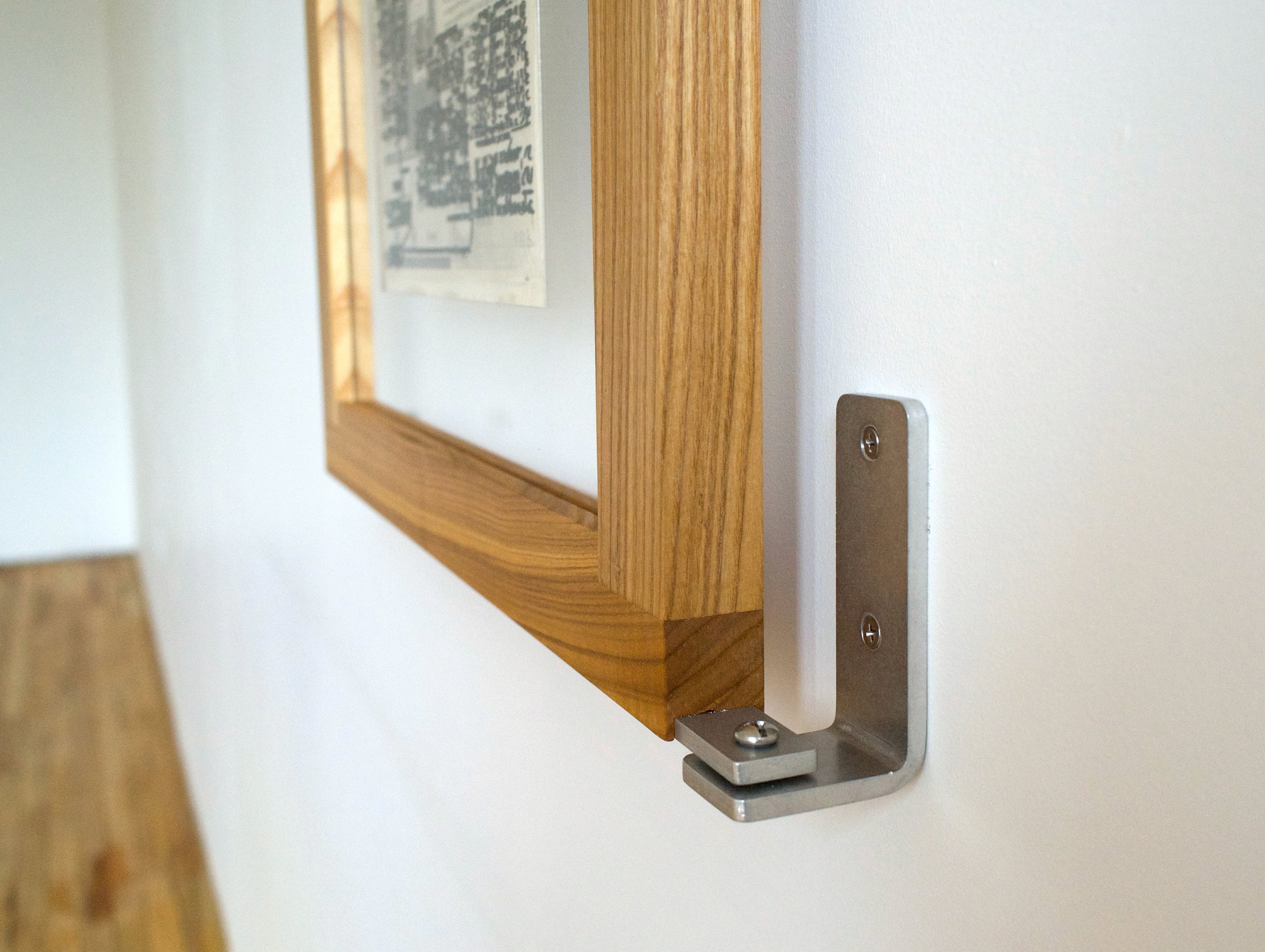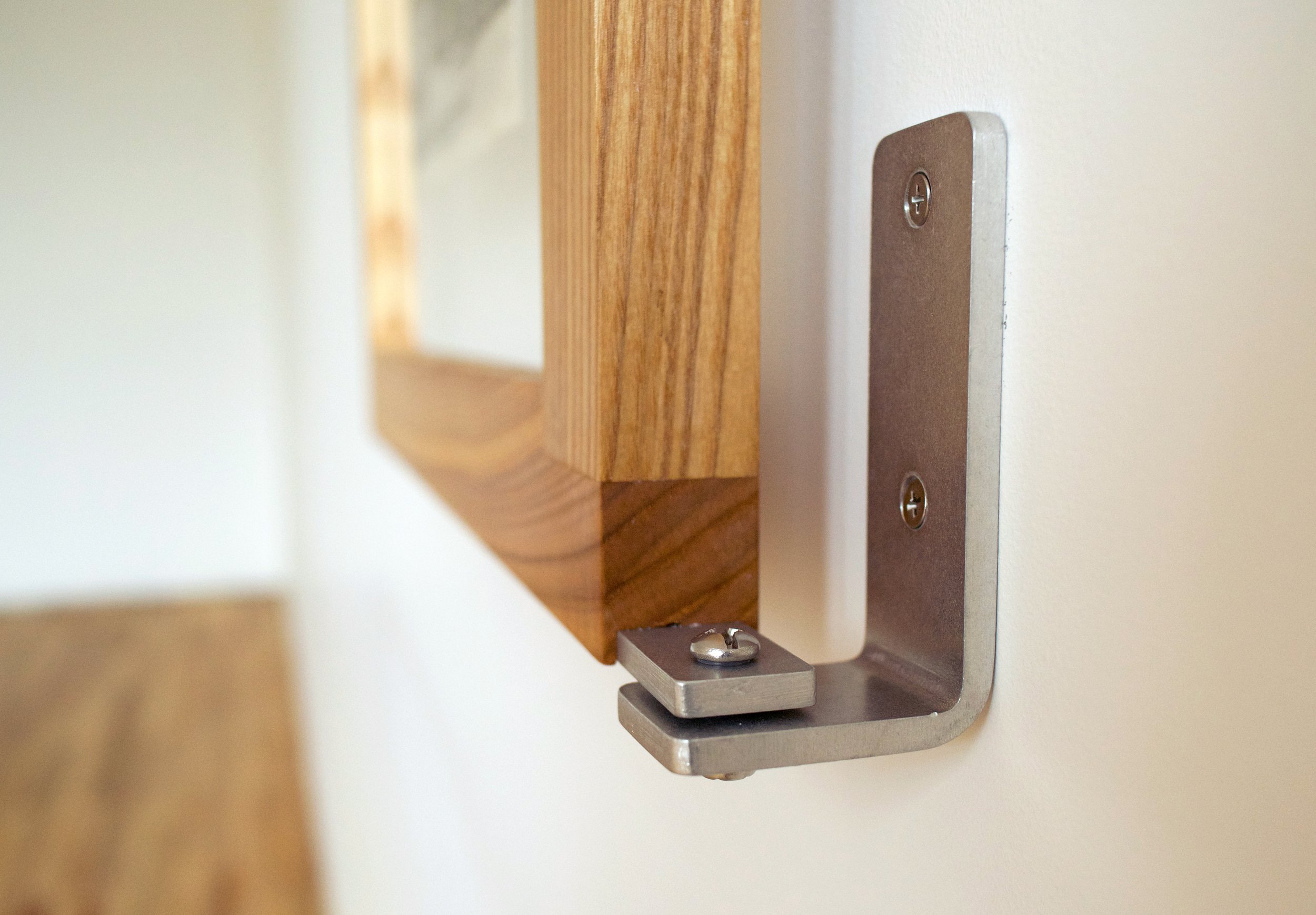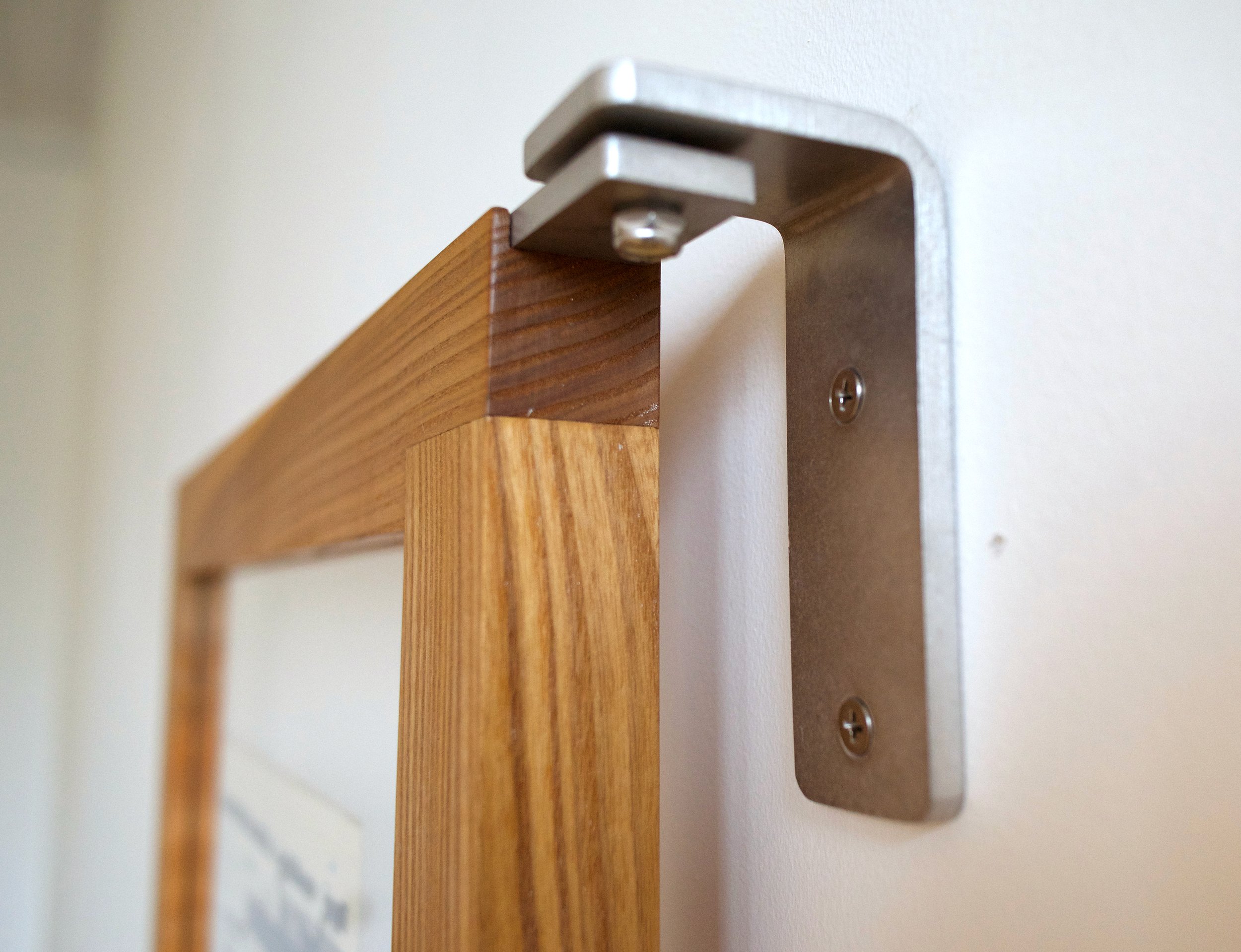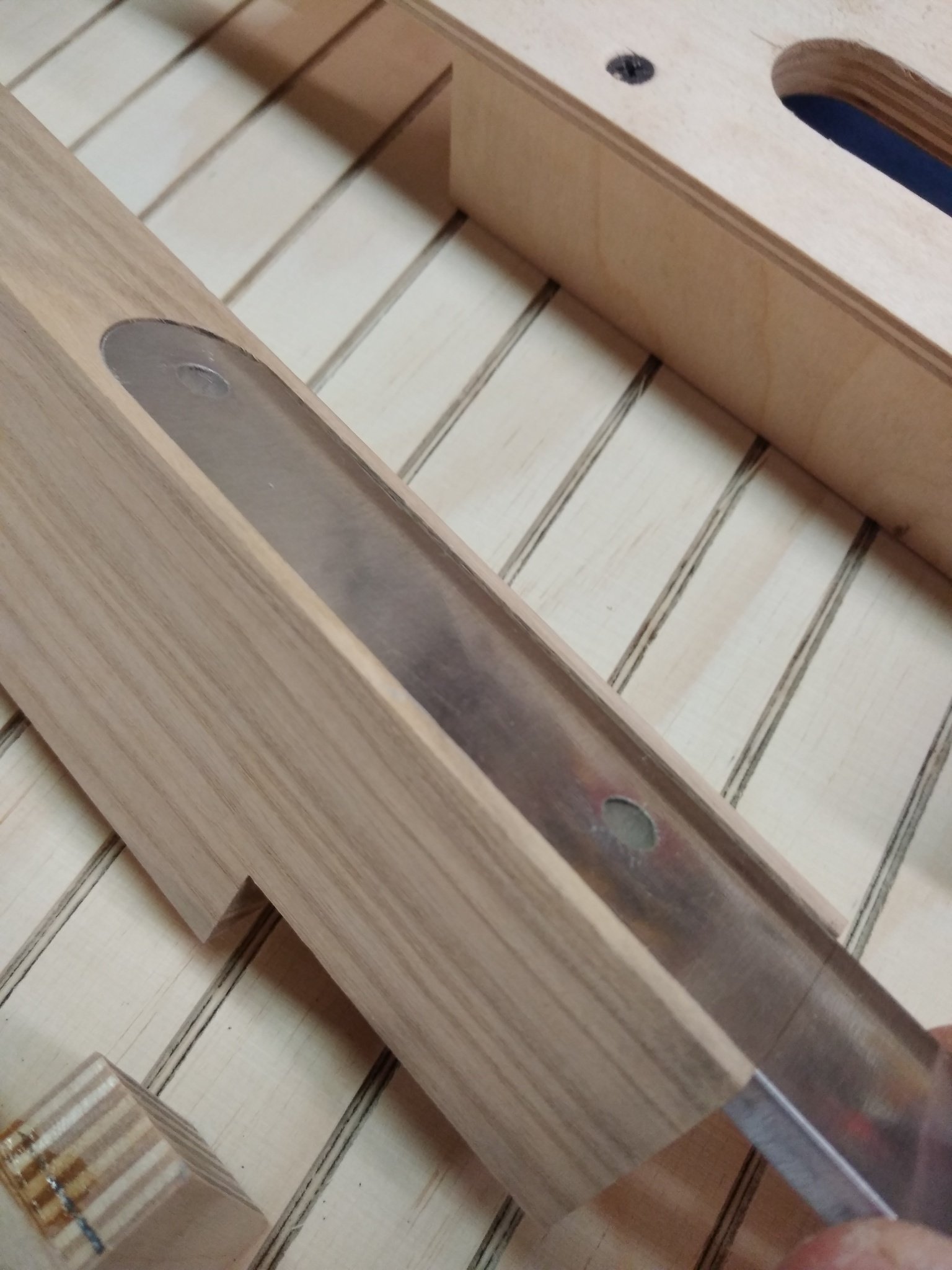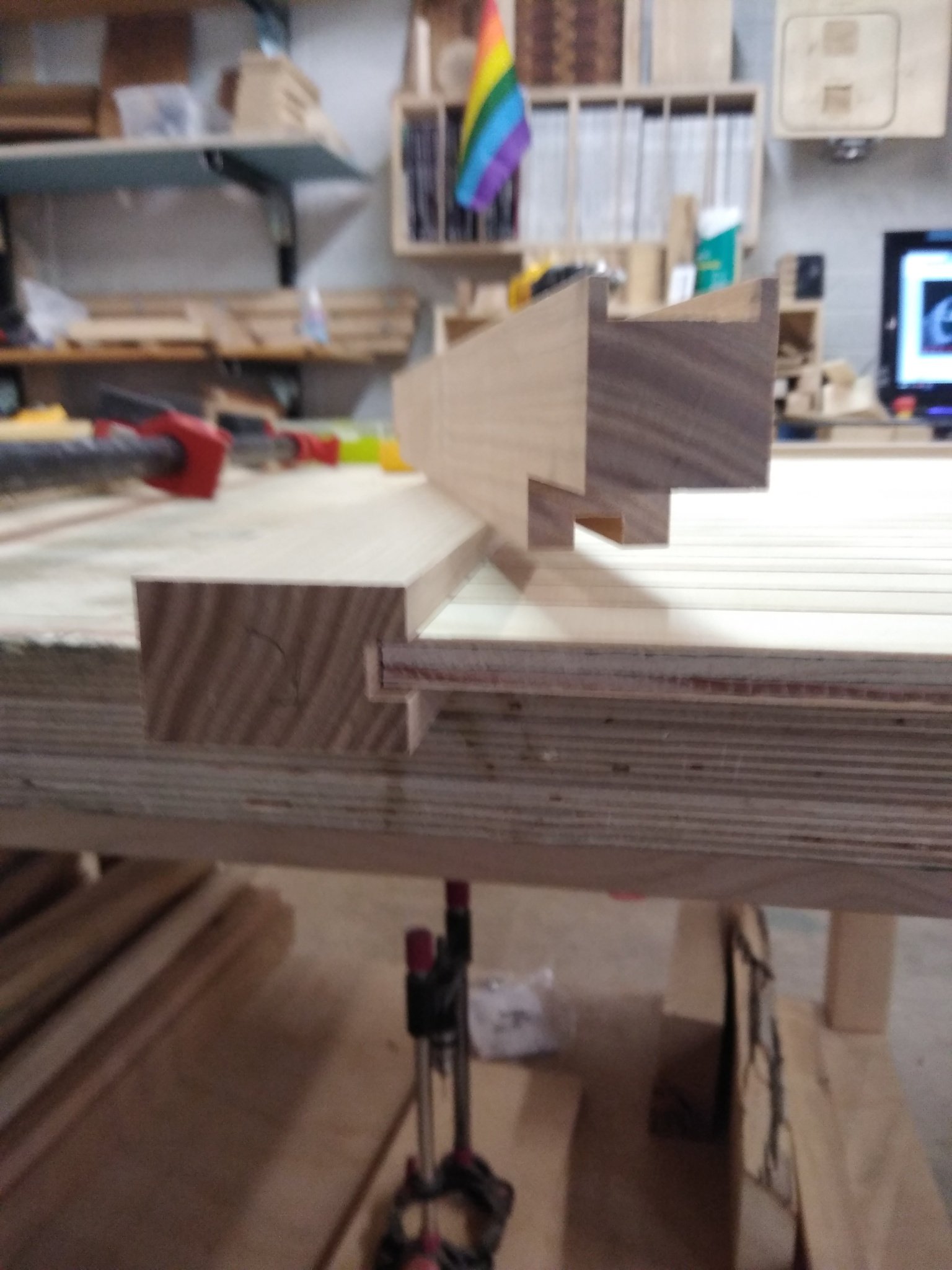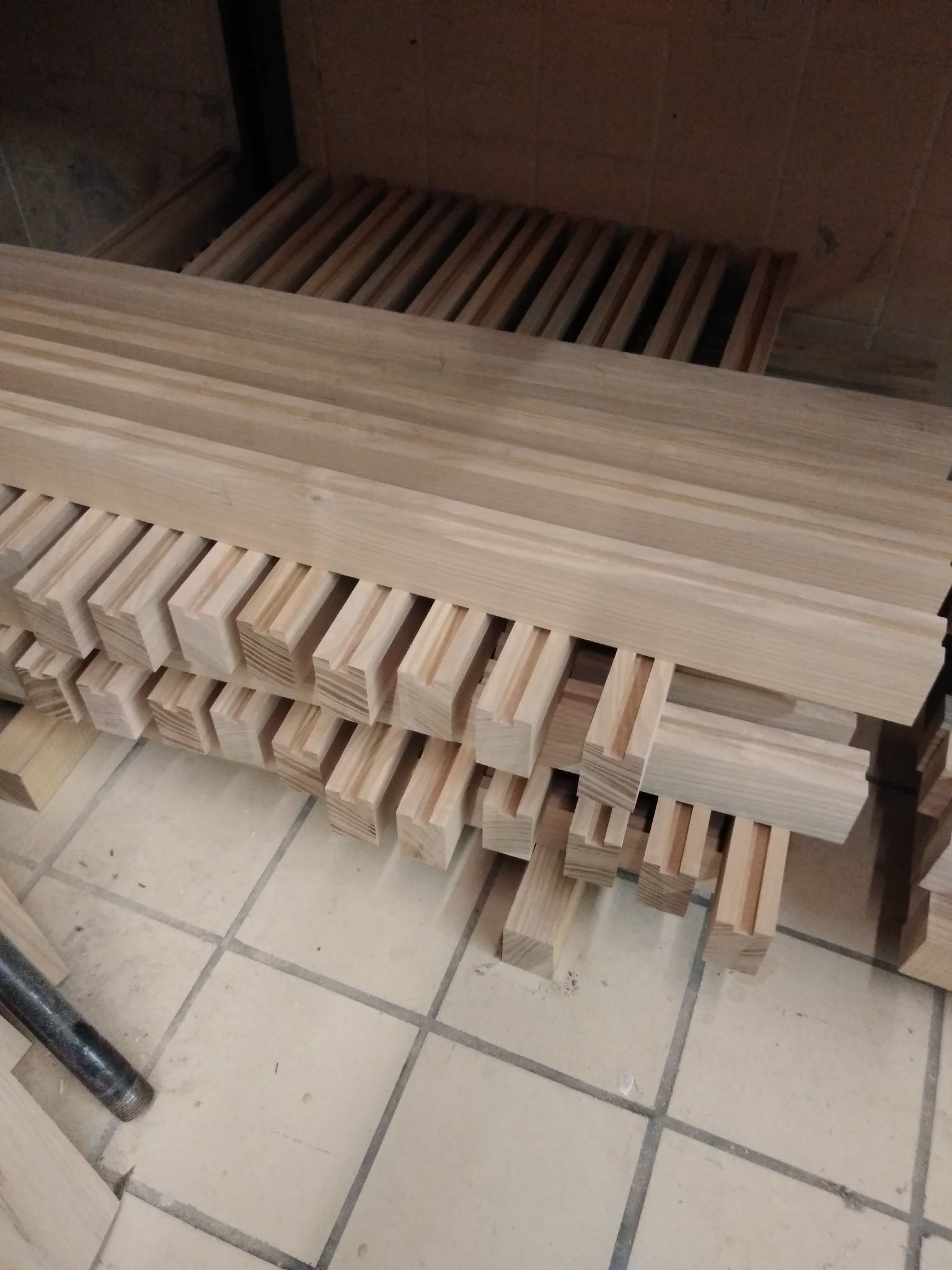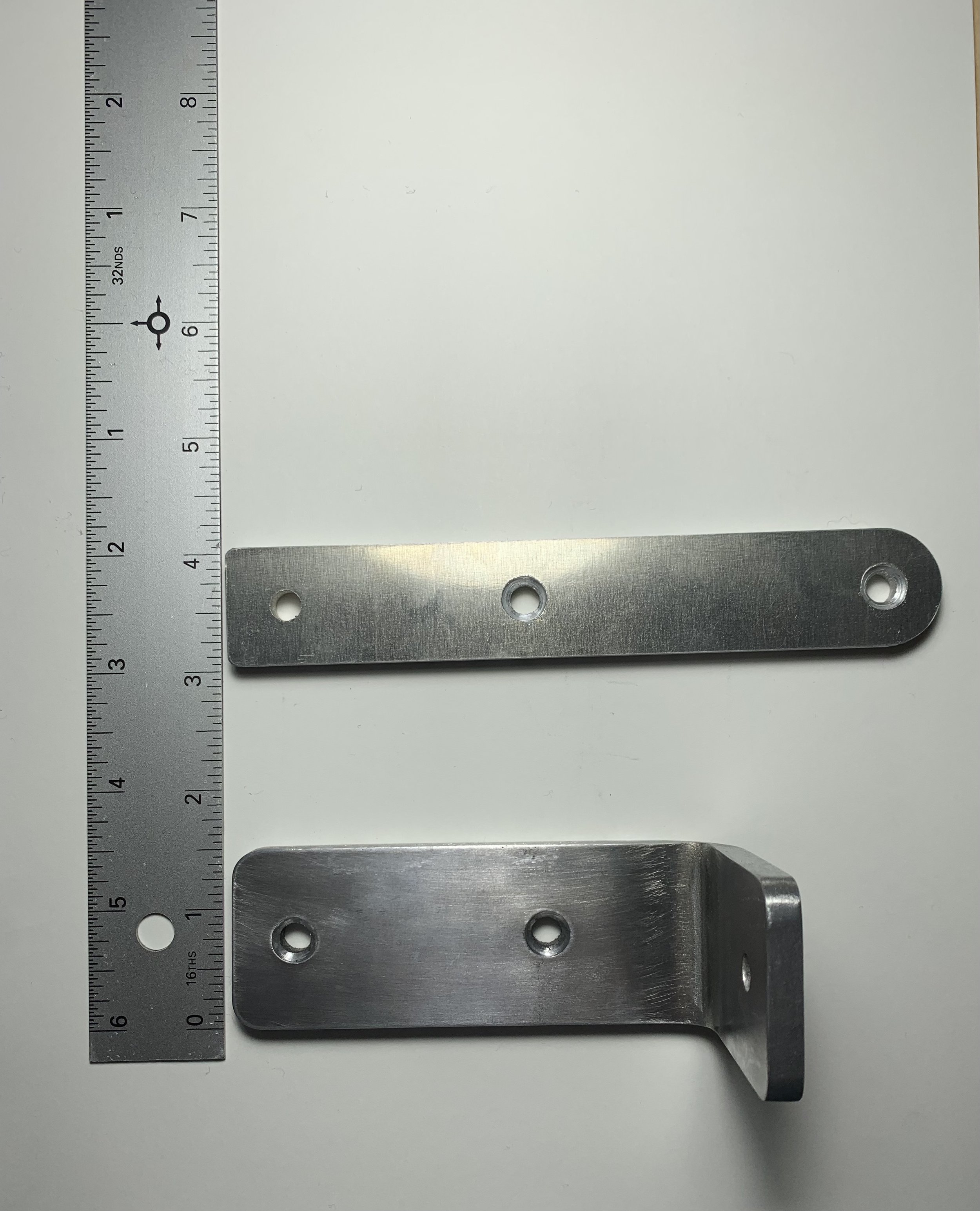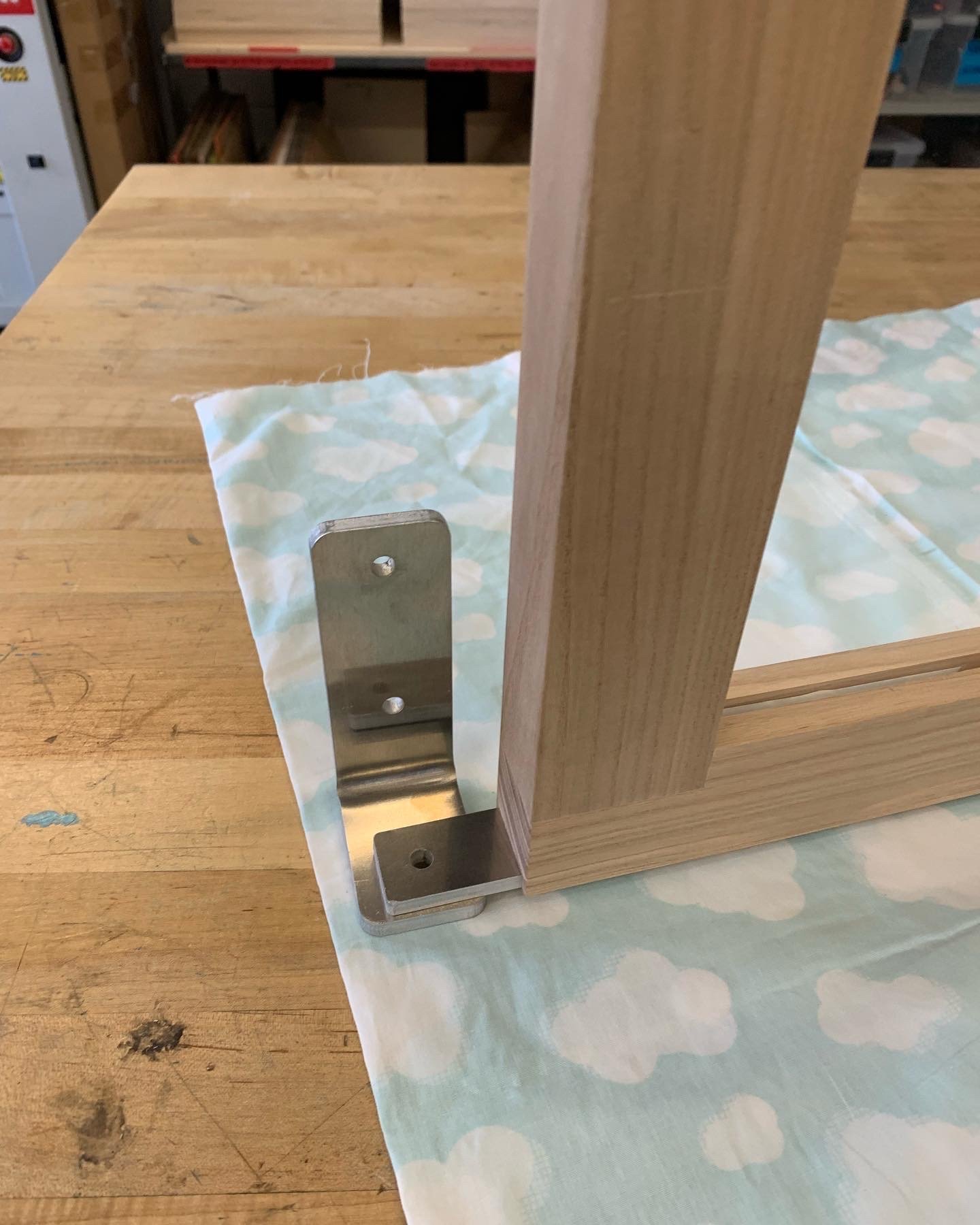“The Times” custom frames
These frames were designed to showcase “The Times” pieces, enabling both sides of the works to be viewed. The wood is from Baldwin Hardwoods, a sustainable lumber company in Ft. Collins, CO. This lumber was sourced from urban Ash trees around CO, milled and kiln dried into dimensional lumber.
I worked with Robby Holb, a local fine carpenter and fellow artist, to design the frames. He cut, planed, routed, and finish sanded each one at our local library maker space, BLDG61, in the wood shop he runs. His mastery of carpentry and deep understanding of the material properties of wood means these frames are not only beautiful, but soundly engineered to withstand the movement intended in these pieces. We chose to use a rabbet joint in lieu of the more traditional mitre joint typically used in framing to improve the strength of the frames. These are joined with pocket hole screws, which are hidden beneath the surface edge of the frame on top and bottom, lending a minimalist look to these pieces. The wood is finished with Danish oil for a richly grained, matte surface.
The hinges were designed with an engineer friend, and fabricated to be as simple yet functionally sound as possible. They are laser cut and bent 1/4” aluminum, with a tumbled finish rather than polished (this helps camouflage minor scratches that may occur during installation). The brackets attach to the wall with two screws each, countersunk into the surface. The hinge strap attaches to a recessed section of the top and bottom of the frame with countersunk screws, which are essentially hidden from view when installed.
Each piece is mounted between two pieces of UV acrylic, inside an additional acrylic mat, laser cut to fit, which gives the piece space to breathe (i.e. not sandwiched/squished between two panes of acrylic), while also offering protection from UV light. Newspaper is not an archival/stable type of paper, and is very fragile, so I have used the most archival/ph neutral materials I could find to mount these pieces. Acrylic is more structurally sound than glass, and at this size, I prefer to use it with a moveable frame. It could be swapped out for archival glass, if preferred.
As can be seen in the photos (and particularly the video) below, the frame swings freely from one side to the other, and can be installed on a wall with enough room to display either side of the piece. They can also be installed within half that space (or less!), with the ability to swing perpendicular to the wall, allowing both sides to be viewed while minimizing the amount of wall area required.
I include fully illustrated installation instructions for these frames, a hanging template for the brackets, and screws for hanging the piece on studs. I highly recommend hanging these frames on a stud to ensure stability when they are moved. It is possible to hang them on drywall, but that requires appropriate anchoring. I do not include anchors, as wall materials and thickness vary widely. These can also be installed on brick or cement walls, but will require the appropriate drill bits and screws to do so.
Each frame measures 31 1/2” high x 21 1/2” wide, and 1 1/4” deep. The brackets are viewable to the side of the frame when it sits parallel to the wall, and the piece sits about 1” away from the surface. When turned perpendicular to the wall, it is about 2” from the surface, so extends about 24” into the room.
Here’s some process images as the frames were made:
